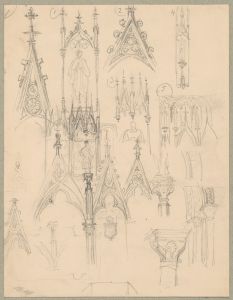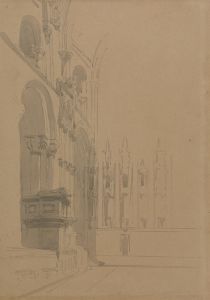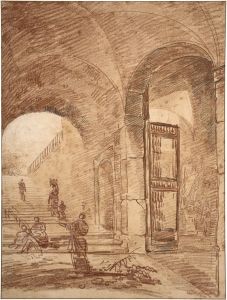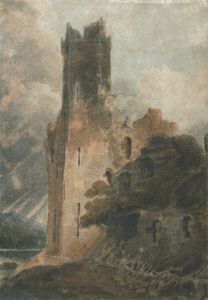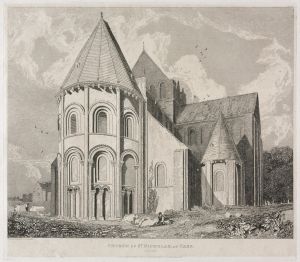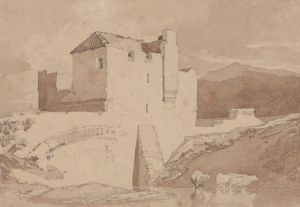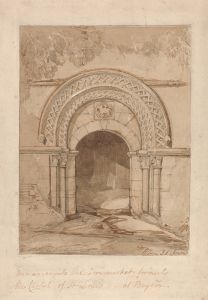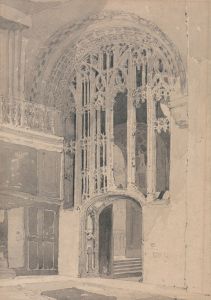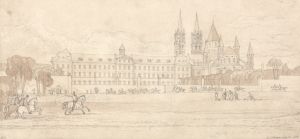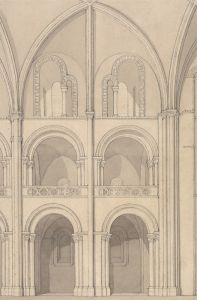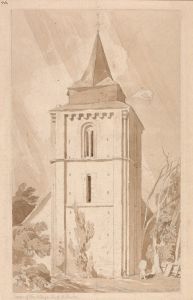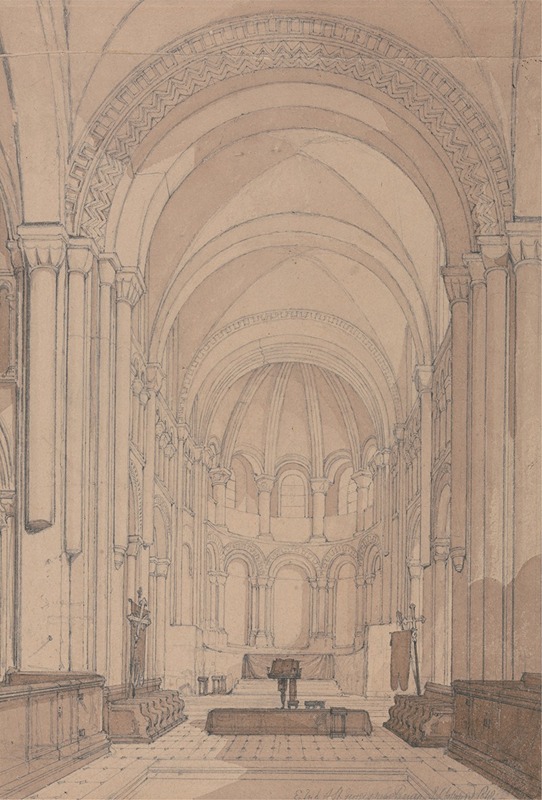
East End of the Abbey Church of Saint Georges de Bocherville, near Rouen, Normandy
A hand-painted replica of John Sell Cotman’s masterpiece East End of the Abbey Church of Saint Georges de Bocherville, near Rouen, Normandy, meticulously crafted by professional artists to capture the true essence of the original. Each piece is created with museum-quality canvas and rare mineral pigments, carefully painted by experienced artists with delicate brushstrokes and rich, layered colors to perfectly recreate the texture of the original artwork. Unlike machine-printed reproductions, this hand-painted version brings the painting to life, infused with the artist’s emotions and skill in every stroke. Whether for personal collection or home decoration, it instantly elevates the artistic atmosphere of any space.
John Sell Cotman’s painting East End of the Abbey Church of Saint Georges de Bocherville, near Rouen, Normandy is a work by the renowned British artist and watercolorist, created during his travels in France. Cotman (1782–1842) was a leading figure of the Norwich School of painters, known for his architectural studies, landscapes, and mastery of watercolor techniques. This particular piece reflects his interest in medieval architecture and his skill in capturing the intricate details of historic structures.
The subject of the painting, the Abbey Church of Saint-Georges de Boscherville, is a Romanesque abbey located near Rouen in Normandy, France. The abbey dates back to the 11th and 12th centuries and is notable for its architectural significance and historical importance. The church is characterized by its harmonious proportions, rounded arches, and decorative stonework, all hallmarks of Romanesque design. Cotman’s depiction focuses on the east end of the church, highlighting its structural elegance and the interplay of light and shadow on the stone surfaces.
Cotman visited Normandy multiple times between 1817 and 1820, during which he produced numerous sketches and studies of French medieval architecture. These travels were part of a broader trend among British artists and antiquarians of the time, who were drawn to the rich architectural heritage of France. Cotman’s works from this period often emphasize precision and clarity, reflecting his deep appreciation for the craftsmanship of the buildings he studied.
The painting demonstrates Cotman’s ability to balance architectural accuracy with artistic expression. His use of muted tones and careful attention to detail convey a sense of timelessness and reverence for the subject. The composition directs the viewer’s eye toward the architectural features of the east end, showcasing the church’s apse and its surrounding elements.
Cotman’s studies of Normandy’s architecture were influential in both artistic and academic circles. His works contributed to a growing interest in medieval architecture in Britain and were later published as part of his Architectural Antiquities of Normandy (1822). This publication included engravings based on his sketches and paintings, further cementing his reputation as a skilled documenter of historical architecture.
Today, Cotman’s works, including East End of the Abbey Church of Saint Georges de Bocherville, near Rouen, Normandy, are celebrated for their artistic merit and historical value. They provide a window into the architectural heritage of Normandy as seen through the eyes of one of Britain’s most accomplished watercolorists.





